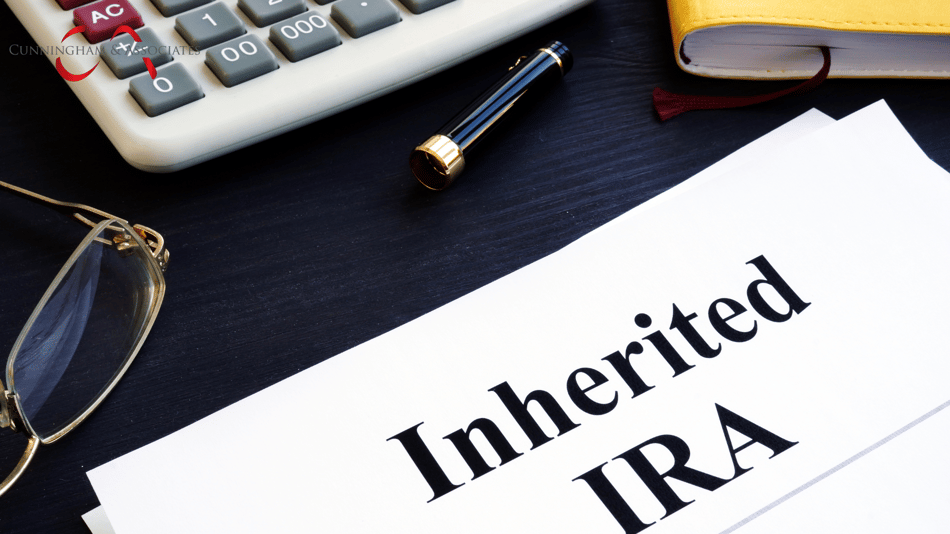The Tax Implications of Inherited IRAs: Understanding Distribution Options

.png?width=50&name=Untitled%20design%20(50).png)
Inherited IRAs present unique tax implications. When an individual inherits an IRA, they may need to take required minimum distributions (RMDs) based on either their life expectancy or the original account holder's life expectancy. This requirement depends on whether the account holder passed away before or after reaching the age of 72 (or 70 ½ for those who turned 70 ½ before January 1, 2020). These RMDs are subject to income tax.
Beneficiaries should also be mindful of the potential income tax implications on any distributions received from the inherited IRA. The tax rate will vary based on the beneficiary's individual tax bracket. Understanding the tax landscape is key, and seeking guidance from a tax professional can help ensure compliance and minimize tax burdens.
Different Distribution Options for Beneficiaries
Beneficiaries of inherited IRAs have different distribution options available to them, and the tax implications will vary depending on the chosen option. The options include:
1. Lump-Sum Distribution: This option allows beneficiaries to withdraw the entire balance of the inherited IRA in one lump sum. While this may provide immediate access to funds, it can result in a substantial tax burden due to the entire distribution being subject to income tax in the year of withdrawal.
2. Five-Year Rule: Under this option, beneficiaries must withdraw all funds from the inherited IRA within five years of the original account holder's death. This can be a suitable option for beneficiaries who don't need immediate access to the funds and want to spread out the tax liability over five years.
3. Life Expectancy Method: This option allows beneficiaries to take distributions from the inherited IRA based on their life expectancy. By using IRS life expectancy tables, beneficiaries can calculate the annual distribution amount, which can help minimize the tax burden by stretching out the distributions over a longer period of time.
Understanding these distribution options and their tax implications is crucial for beneficiaries to make informed decisions and minimize their tax burdens.
Tax Consequences of Withdrawing from Inherited IRAs
Withdrawing from an inherited IRA can have significant tax consequences for beneficiaries. As mentioned earlier, lump-sum distributions from inherited IRAs are subject to income tax in the year of withdrawal. This can result in a large tax bill and potentially push beneficiaries into higher tax brackets.
Furthermore, withdrawals from inherited IRAs may also be subject to the additional 10% early withdrawal penalty if the beneficiary is under the age of 59 ½, unless an exception applies. It's important for beneficiaries to consider these tax consequences before making any withdrawals and consult with a tax professional to understand the full impact on their tax situation.
Benefits of Rolling Over Inherited IRAs
Transferring an inherited IRA to a new account can bring numerous advantages to beneficiaries, potentially including tax benefits. By moving the inherited IRA to their personal IRA, beneficiaries can postpone taxes on the account and let the funds grow tax-deferred. This can be especially beneficial for beneficiaries not needing immediate access to the funds and aiming to maximize tax advantages.
Moreover, transitioning the inherited IRA can offer more options for distributions. Beneficiaries have the flexibility to choose distributions based on their own life expectancy or even convert the funds into a Roth IRA, providing the opportunity for tax-free withdrawals in the future.
Beneficiaries should assess their financial objectives and seek advice from a financial advisor or tax professional to determine if transferring the inherited IRA aligns with their needs.
Strategies for Minimizing Tax Burdens on Inherited IRAs
Minimizing tax burdens on inherited IRAs necessitates thoughtful planning and consideration. Here are some effective strategies that beneficiaries can implement:
1. Stretching Distributions: Opting for the life expectancy method allows beneficiaries to extend the distributions from the inherited IRA over a longer timeframe. This approach can help reduce the tax burden by spreading out the taxable income.
2. Charitable Contributions: Beneficiaries with a charitable inclination may explore making qualified charitable distributions (QCDs) from the inherited IRA. This enables them to donate a portion of the funds directly to a qualified charity, offering a tax benefit by lowering their taxable income.
3. Roth Conversions: Depending on their individual tax circumstances, beneficiaries could contemplate converting the inherited IRA into a Roth IRA. While this incurs immediate tax liability on the converted amount, it can lead to tax-free withdrawals in the future, potentially lessening the overall tax burden.
4. Coordination with Other Income: Beneficiaries should strategize coordinating distributions from the inherited IRA with their other income sources to minimize the impact on their tax bracket. By timing distributions strategically, beneficiaries may be able to remain within a lower tax bracket and reduce their overall tax liability.
Beneficiaries are strongly advised to seek guidance from a tax professional or financial advisor to determine the most suitable strategies for their specific situation and objectives. Having these conversations and strategies in place beforehand can make this process seamless, and our team can help. Set up a time to meet with C&A today.

.png?width=341&height=100&name=www.jec-llc.comhs-fshubfslogo%20(2).png)


.png?width=50&name=Ryan%20Foley%2c%20Partner%20(5).png)

